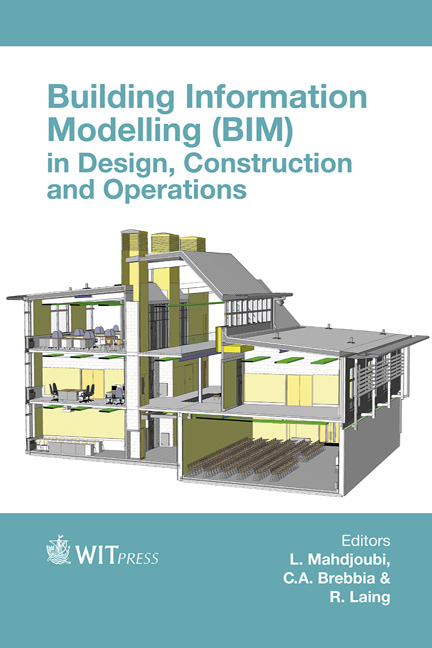Scan To BIM: The Development Of A Clear Workflow For The Incorporation Of Point Clouds Within A BIM Environment
Price
Free (open access)
Transaction
Volume
149
Pages
11
Page Range
279 - 289
Published
2015
Size
3,406 kb
Paper DOI
10.2495/BIM150241
Copyright
WIT Press
Author(s)
R. Laing, M. Leon, J. Isaacs, D. Georgiev
Abstract
The emergence, in recent years, of technology to support the use of data rich models within architecture, has significantly aided the uptake of building information modelling. Simultaneously, there has been a rapid expansion in the capabilities and widespread use of 3D high definition laser scanning technology. Although laser scanning has often been associated with industries outside of architecture and building (including heavy engineering and oil and gas installations), the potential to record the existing built environment is clear. Indeed, well-established concepts within building and materials conservation concerning the importance of being able to accurately monitor and recognise the importance of surface characteristics, are well suited to the use of scanning to capture geometrical idiosyncrasies as well as designed detail. Likewise, the ability to capture structures which are well outside the physical reach of the expert, makes the accurate recording of large scale buildings and streetscapes possible, and at a speed and level of accuracy which was not feasible even 15 years ago. This paper concerns a series of workflow stages which are required to incorporate the output of laser scan data within a BIM environment. Although it is possible to import point clouds within industry standard BIM software, in order to make best use of the highly accurate and often massive data files a certain amount of post-processing and modelling is required. We describe a process whereby cloud data can be transformed to produce representative surface meshes, and explore how the resultant models can be linked with meta data within the BIM environment. The development of methods to help the incorporation of already existing environments within BIM will be of great value within FM, building conservation and new design alike. Therefore, the refinement and adoption of clear methods to support such work is a vital step towards BIM maturation.
Keywords
BIM scanning, models contours, 3D scanning, BIM





